
Kitchen Island, Barn Power – March 2024 Update
Welcome to my shop! This is a quick update to let you know what I’ve been up to. This big chunky thing is the leg

about 4 years ago, I started making some large end grain cutting boards but for whatever reason, I never finished them and simply stacked them in the corner of my shop. Most of them developed cracks so I figured these would make good stock for a chaos style board since that involves cutting a perfectly good cutting board back up into strips.

So jumping back in time, let’s take a look at how the existing boards began. I was left with a lot of scraps after making my own trim and flooring fro our family room. I also had the original trim from the room which was maple. I planed all these scraps to have a 2″ flat of them and glued them together into blanks.
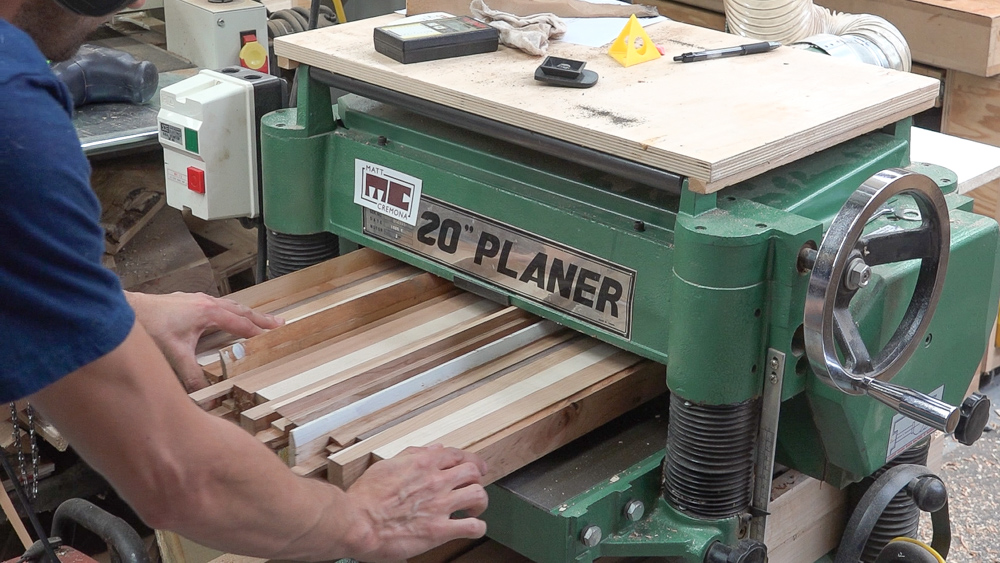
Once glued up, I could flatten and clean up the blanks. I ran these through the planer to flush everything up and then gave each blank a quick pass with the sander to remove anything that would cause the glue seams to be less than perfect.
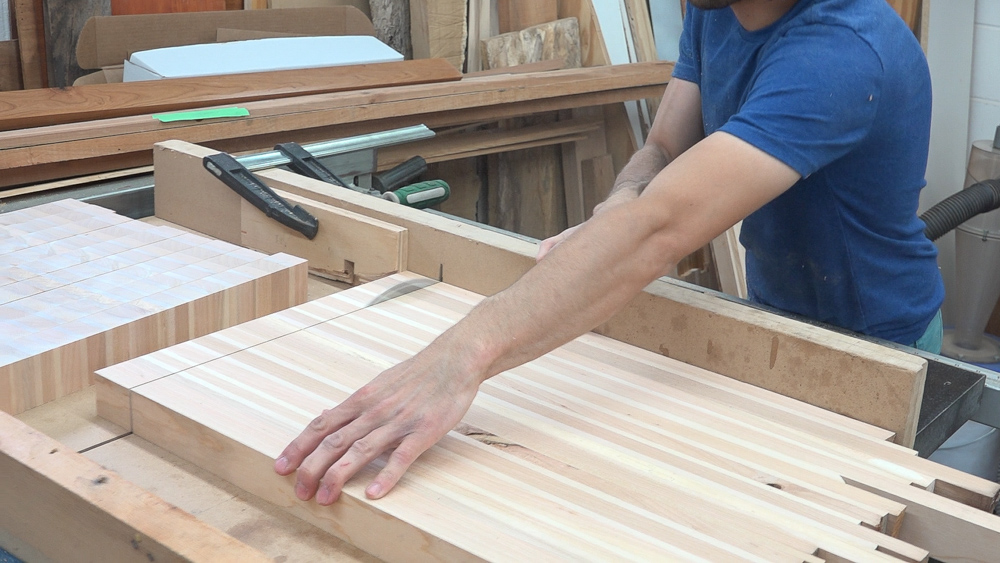
I’ll use the crosscut sled to cut the blanks into end grain strips. A stop block is used to set the desired final thickness of the cutting board.

Each blank is different but they’re all the same width. This allows me to mix and match strips from different blanks to achieve a seemingly random pattern.
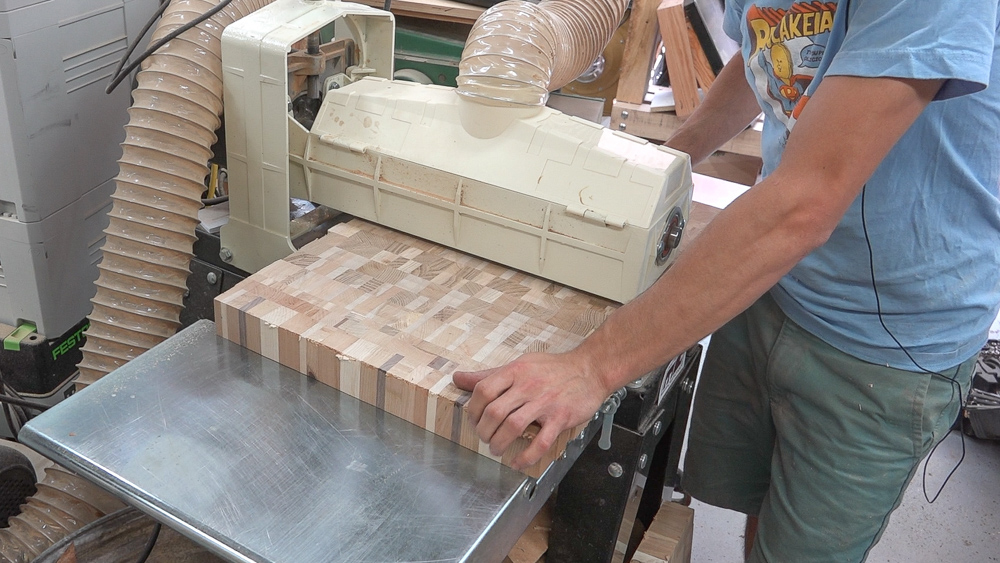
The strips get glued together, flattened with a router sled, and run through the drum sander. For whatever reason, this was as far as I took this project.

Back to the present: I’ll use a track saw to cut an arbitrarily angle onto each board to remove any cracked area.

Using that cut as reference, the board can be cut again into strips.

Those strips are then glued back together into a new end grain cutting board.

This process can be repeated until the pattern is crazy enough. I decided to iterate once more.
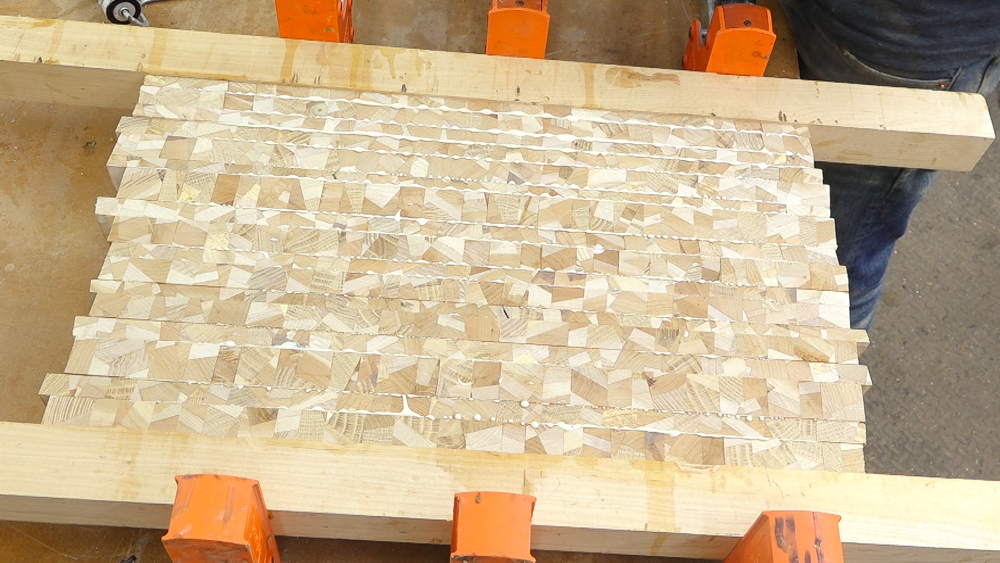
That second iteration made a big difference.

Now we can work towards getting the boards finished up. I flattened them with a router sled and then gave them a few passes through my drum sander to get a head start on sanding.

The boards are sanded through 180.
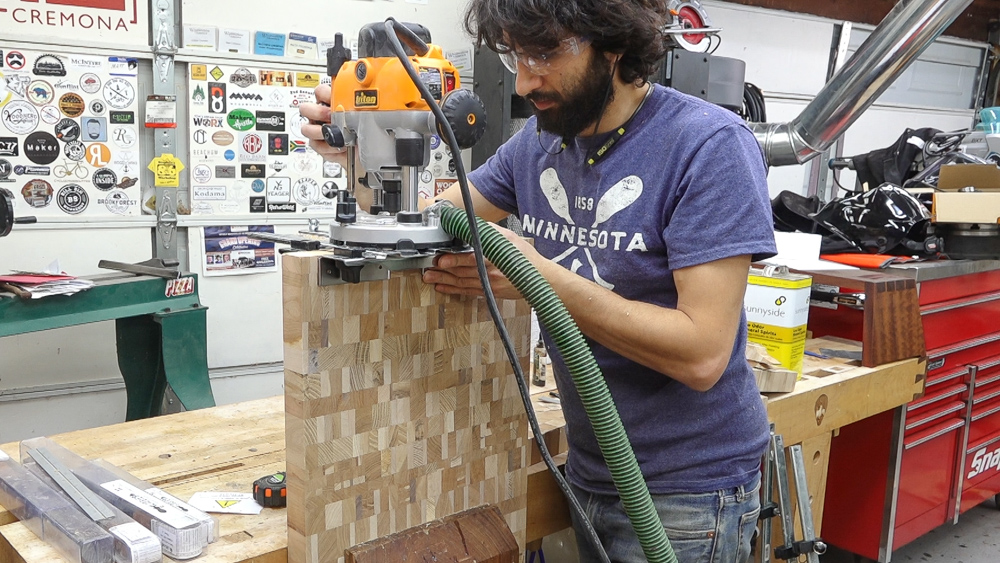
Next I’ll add the fingerholds. These are cut with a 3/4″ corebox bit in the router. I make mine 4″ long and centered in the end of the board.

Finally time for finish! I flood on a food safe varnish and allow the finish to soak in. I know it’s time to flip the board when I can see finish starting to make it all the way through the thickness.

Once that first coat is cured, I’ll apply a very light second coat which helps to even things out. I’m trying to avoid building a film so knives are cutting through finish.

[Amazon links are affiliate links]
Router: http://amzn.to/2hXj5AC
Jig Saw: https://amzn.to/2PedA0a
Table Saw: https://amzn.to/2XON2Jw
Bandsaw: http://amzn.to/2HISAf0
Dust Mask: http://amzn.to/2y8dl1m
Hearing Protection: http://amzn.to/2yQ0sa3
Triton Track Saw: http://amzn.to/2f2P85l
Push Blocks: http://amzn.to/2yQD24r
Fingerhold Router Bit: https://amzn.to/2zPale0
Finish: https://amzn.to/2XPauGz


Welcome to my shop! This is a quick update to let you know what I’ve been up to. This big chunky thing is the leg

Welcome back to the home renovation. This time I’m going to be working on the kitchen island. Here is a small model of the island.

Welcome back to our home renovation. Today I am going to be working on this wall. It needs some upper cabinets and the surround for